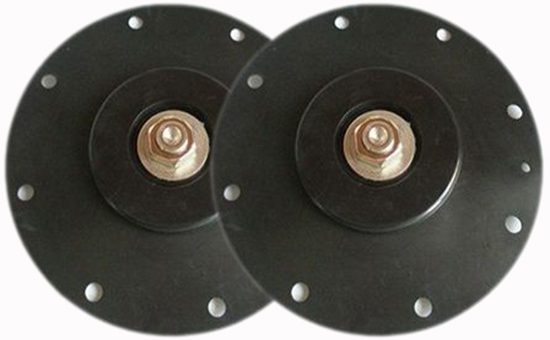
The rubber sealing diaphragm can be divided into a single layer or a multi-layer fabric with pure rubber without fabric and double-sided coating. The rubber diaphragm with nitrile rubber as the main raw material has excellent oil resistance and can maintain good performance in oil medium for a long time. At present, many oil-resistant separator manufacturers add an appropriate amount of nitrile reclaimed rubber to the oil-resistant diaphragm formulation in order to reduce the production cost. However, as a typical sheet-like rubber product, the oil-resistant rubber diaphragm has strict requirements on the rubber compound and the production process.
1. Oil-resistant rubber diaphragm with nitrile reclaimed rubber attention points
Nitrile rubber diaphragm is a typical sheet-type product. When using nitrile reclaimed rubber, it is necessary to select a product with high fineness and no impurity to ensure smooth and bright surface of the oil-resistant rubber diaphragm. The nitrile is regenerated in the oil-resistant rubber diaphragm. In the case of glue, it is necessary to properly control the amount of reclaimed rubber according to the specific performance requirements of the rubber diaphragm and the quality of the nitrile reclaimed rubber. In theory, the better the quality of the nitrile reclaimed rubber and the dosage can be appropriately increased.
2. Oil-resistant rubber diaphragm requirements for plasticity
Neither nitrile rubber nor nitrile reclaimed rubber is a highly elastic polymer, which is difficult to process. Therefore, it is necessary to take certain measures to improve the plasticity of the rubber compound and ensure the good processability of the rubber compound and the fluidity during vulcanization. Under normal circumstances, the plasticity of the rubber used in the nitrile oil-resistant rubber diaphragm is about 0.35-0.4, and the plasticity of the rubber mixture is between 0.35-0.5.
3. Adhesion of oil resistant rubber to skeleton material
Many oil-resistant rubber diaphragms contain a skeleton material, or a single layer or multiple layers. The adhesion between the matrix material and the rubber compound directly affects the quality of the oil-resistant rubber diaphragm during the production process. Therefore, the skeleton material needs to be processed in advance, and different materials are processed. Different ways.
(1) Nitrile rubber/recycled rubber production of oil-resistant rubber diaphragm When cotton canvas is selected as the skeleton material, the canvas surface can be rubbed or glued in advance;
(2) When the nylon material is used as the skeleton material in the oil-resistant rubber diaphragm, it can be surface-treated with 589 resin. Generally, 589 resin and water are dissolved in a mass ratio of 1:20; after immersion, 140-150 Drying is carried out in the temperature range of °C, usually 2 to 3 times after immersion treatment; after the nylon canvas is impregnated, the glue is applied, and then the slurry is generally applied first, and then the thick slurry is applied.
When using a nitrile rubber or a nitrile reclaimed rubber to produce a rubber diaphragm, you need to pay attention to many problems in the process of mixing, bonding, molding, and clamping. If you are interested, you can continue to pay attention to us. We will continue to discuss later.
Exclusive original article [commercial authorization] reprint, excerpt and excerpt in any form are prohibited without written authorization. Focus on Hongyun rubber: learn the process formula and raw material technology of producing rubber products from recycled rubber to help you reduce costs and increase profits